Flash Sale ???? Jump-N-Carry JNC660 1700 Peak Amp 12 Volt Jump Starter , B ????
$37.99 Original price was: $37.99.$26.59Current price is: $26.59.
- Have the best deals
- Experience Quality, Shop with Us
- Shop with confidence, we guarantee quality.
- Experience the difference quality makes.

- Brand: Clore Automotive
- Battery Cell Composition: Lead-Acid, AGM
- Voltage: 12 Volts
- Item Dimensions LxWxH: 16.3 x 14.1 x 5.1 inches
- Vehicle Service Type: Passenger Car
- 1,700 Peak Amps; 425 Cranking Amps
- 22Ah Clore PROFORMER Battery
- 46″ Heavy-Duty #2 AWG Cables
- Voltmeter provides charge status of onboard battery.The ideal storage environment is room temperature, or 68ºF
- DC outlet to power 12 volt accessories; DC input to recharge internal battery
- Built-in Automatic Charger. Industrial-grade clamps.
| Style | Jump Starter, Jump Starter + Cover |
|---|
5 reviews for Flash Sale ???? Jump-N-Carry JNC660 1700 Peak Amp 12 Volt Jump Starter , B ????
Add a review Cancel reply
Related products
Sale!
Batteries & Accessories
Rated 4.43 out of 5
Sale!
Batteries & Accessories
Hot Sale ⌛ D3400 XS Series 12V 3,300 Amp AGM High Output Battery With M6 Terminal Bolt ????
Rated 4.43 out of 5
Sale!
Batteries & Accessories
Rated 4.00 out of 5
Sale!
Batteries & Accessories
Best reviews of ???? OPT8016-103 Batteries D34M BlueTop Starting And Deep Cycle Marine Battery ????
Rated 4.43 out of 5
Sale!
Batteries & Accessories
Rated 4.29 out of 5
Sale!
Batteries & Accessories
Top 10 ???? (56-959) Silver MUS 4.3 TEST & CHARGE 12 Volt Fully Automatic Charger And Tester ????
Rated 4.57 out of 5
Sale!
Batteries & Accessories
Rated 5.00 out of 5
Sale!
Batteries & Accessories
Deals ???? (56-926) LITHIUM US 12 Volt Fully Automatic LiFePO4 Battery Charger,Blue ????
Rated 4.63 out of 5






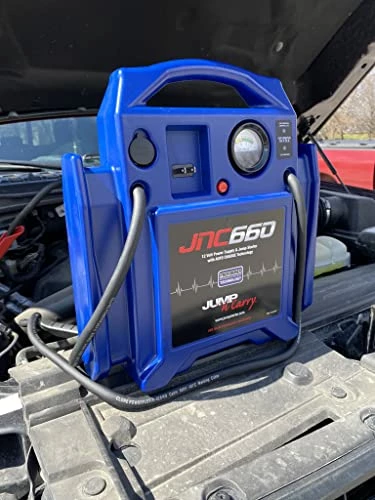




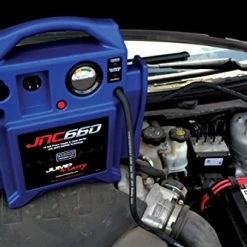
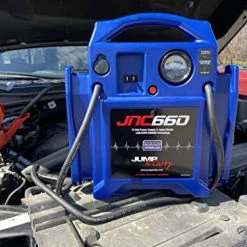

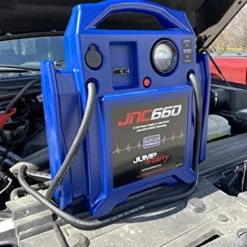



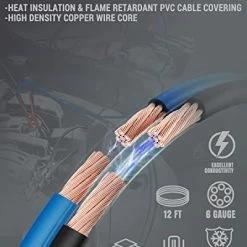

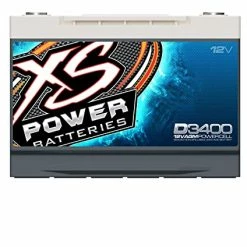
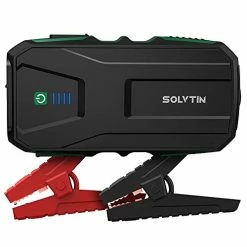

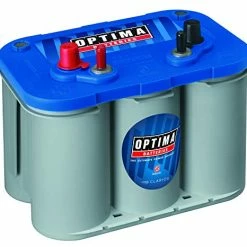



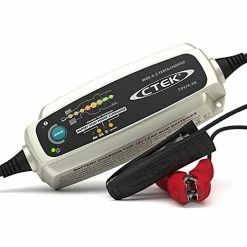

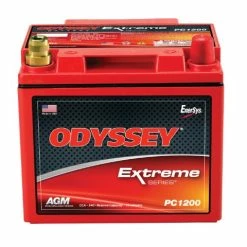


Nemo –
Review Update:I decided to bump this device up to four-stars. Upon even further very closely reading the instructions, the device is in fact charged when the Green “CHARGED” light goes on. The instructions explicitly state that you can leave the jump-starter plugged in and it appears that the DC power gauge won’t ever reach the far right of the dial because it’s not supposed to. It’s a power meter, not a meter that lets you know how “full” it is like a gas tank meter. In other words, the needle at the 3/4 mark means it has that much electrical power–which is in fact its max possible storable voltage. This is also why they advise charging it after each use because stored power will eventually dissipate. The only added bit of confusion was when charging it via the provided 12 volt cigarette adaptor. They advise NOT leaving it charging once it’s “full”, which, from an empty state would take about 5 hours. I chose to not give this product five-star because of the instructions were just not as clear as they could be (there’s no diagram, etc.)Original Review:Before I purchased this device, I did extensive research on the Lithium jump starters as well as alternate lead battery jump starters options with other bells and whistles like a tire inflator, light, etc.These are my findings as of the past couple days (Dec 4th & 5th) that hopefully will be useful to you.I have a small turbo-charged 4 cyl vehicle. The battery is 3 years old & the water levels are perfect.Unfortunately, I’ve had two jump starts from the auto club recently and it appears the battery won’t hold a charge, despite driving around for better than 30 minutes each time thereafter.I chose to buy this product because it was nearly half the price of the top of the line Lithium charging product. Granted, this is larger and heavier, and while it wasn’t just a price factor for me, price was a large part of taking a chance on it.I also bought it because the auto club mechanic advised me to invest in this type over the smaller Lithiums.I also chose this product because I liked the beefier alligator clips as well as the DC meter gauge than what the Lithium equivalents provide.I first read all the one-star complaints then read the five-star raves.My issue was that if the auto club jump start worked and I no longer had a battery concern, it could be months before discovering the need to use this one I purchased in order to verify it does in fact work, and thus would miss my window to return it. Unfortunately, I did not have to wait long to test it because the battery did in fact die again.The instructions on this product strongly advise you charge the device fully before first using it.This task is a bit cumbersome to do because it has a 2-prong “male” setup right on the device, into which you must plug an extension cord of your own. (or use the provided self-enclosed cigarette lighter cable, but who has a cig lighter anymore in their car??).Fortunately, I had a household extension cord available, and what’s thoughtful about this device’s design is the area into which you must plug the extension cord is somewhat widely recessed to accomodate an extension cord with multiple “female” receptacles on the end. I thought that was really nice.So before I began charging the device I pressed the red button to see exactly how much charge the battery came with. The reason I give this only three and not four stars is because after charging it for about 7 hours there was no appreciable or recognizable increase in voltage capacity when I pressed the red button again. Moreover, there are two lights and once I plugged it in to charge, the “CHARGED” light lit up. The “CHARGING” light never lit up. I don’t know if it’s because it had a “full charge” from the factory or if for some reason the device was not in fact charging. Either way, the “Charging” light was not lighting and the DC electric gauge indicated that it was three-quarters charged.The next day (today) I proceeded to use the device.The instructions clearly state to attach the Positive (+…red) clip to the Positive (+…red) battery terminal first.Then you are to attach the Negative (-…black) clip to the metal frame of your car (this is to prevent possibly inadvertently switching the clips b/c sometimes a battery can get so dirty you can’t see the difference between Positive and Negative in the dark and could explode the battery).My car totally did not start like this. I even took a picture and posted it here to show I was connecting it per the instructions.Now, having had piece of junk cars in the past that often needing jumping, I decided to go old school and connect red-to-red and black-to-black (i.e. not connecting the black to the frame).Let me tell you, my car started up lickity split that way! It took no prisoners and did not blink an eye.I then proceeded to drive it around for thirty minutes, stopped to run an errand, and my battery yet again had died, which clearly tells me something more is going on with it. Fortunately, I brought the jump start device with me and I did not find myself stranded. My next stop objective is to find an auto parts store that can test the ability of the battery to hold a charge.I’m really happy with this product so far, with the exception that I could not discern if it was in fact recharging itself. This could be a problem down the road, but in the meantime it will have bailed me out a few times until potentially getting a new battery.Personally, I feel that if you know how to properly inflate your car tires or pump gas yourself, you should be able to easily use this device.Oh, one other really nice thing is that the manufacturer gives you an $85 coupon valid for one repair and shipping costs back to you. Of course, it’s so heavy it might end up costing you $50 to ship it to them. haha
A. Harrison –
I purchased my unit back in March of 2016 and just replaced the battery for the first time in February of 2022. That’s pretty good for just about any lead-acid battery. I only use it occasionally but keep it topped off by charging it about every 4 to 6 weeks, just like clock work. Any lead-acid battery will need to be kept charged when not in use and or will be damaged if you don’t. Think of it as any lawn tractor battery or car battery. They need to be kept charged. I usually top off all my batteries during the same day or two (Jackerys, etc.) as part of a routine so I always have them ready when I need them. By doing them all roughly at the same time nothing gets overlooked and then I’m good for another 4-6 weeks. And, by using post-it notes on the batteries I don’t have to guess when they were last charged. Take care of your batteries and they will take care of you.
Georgia Peach –
Have used these at work. Gets a lot of use and abuse. Mostly use on large trucks and diesel engine start batteries. Work for a large package delivery company with airplanes. Prefer the lead acid battery style over the lithium jump packs. Cigarette lighter plug is very useful for use with the OBD 2 memory saver when swapping out car and truck batteries.
Amazon Customer –
I keep it in the car behind the driver’s seat. Usually plugged in so it’s always topped up.But I -have- gotten at least six starts on a friend’s car (long story) on one charge.I’m seriously considering not carrying jumper cables anymore.
Eugene G. Huegin –
When my RAM truck had a dead battery, I called AAA to jump start the vehicle. When he showed up, he pulled out a Jump-n-Carry JNC-660. He used it’s volt meter gauge to assess my batterie’s voltage. Confirming it was low, he then used the unit to provide a powerful jump to my truck which immediately started. I’ve seen smaller units that could probably fit in a glove box. But I chose this because if it’s tough enough for such heavy service as AAA might impose, I felt confident it would never let me down. It rides in my pickup truck always.